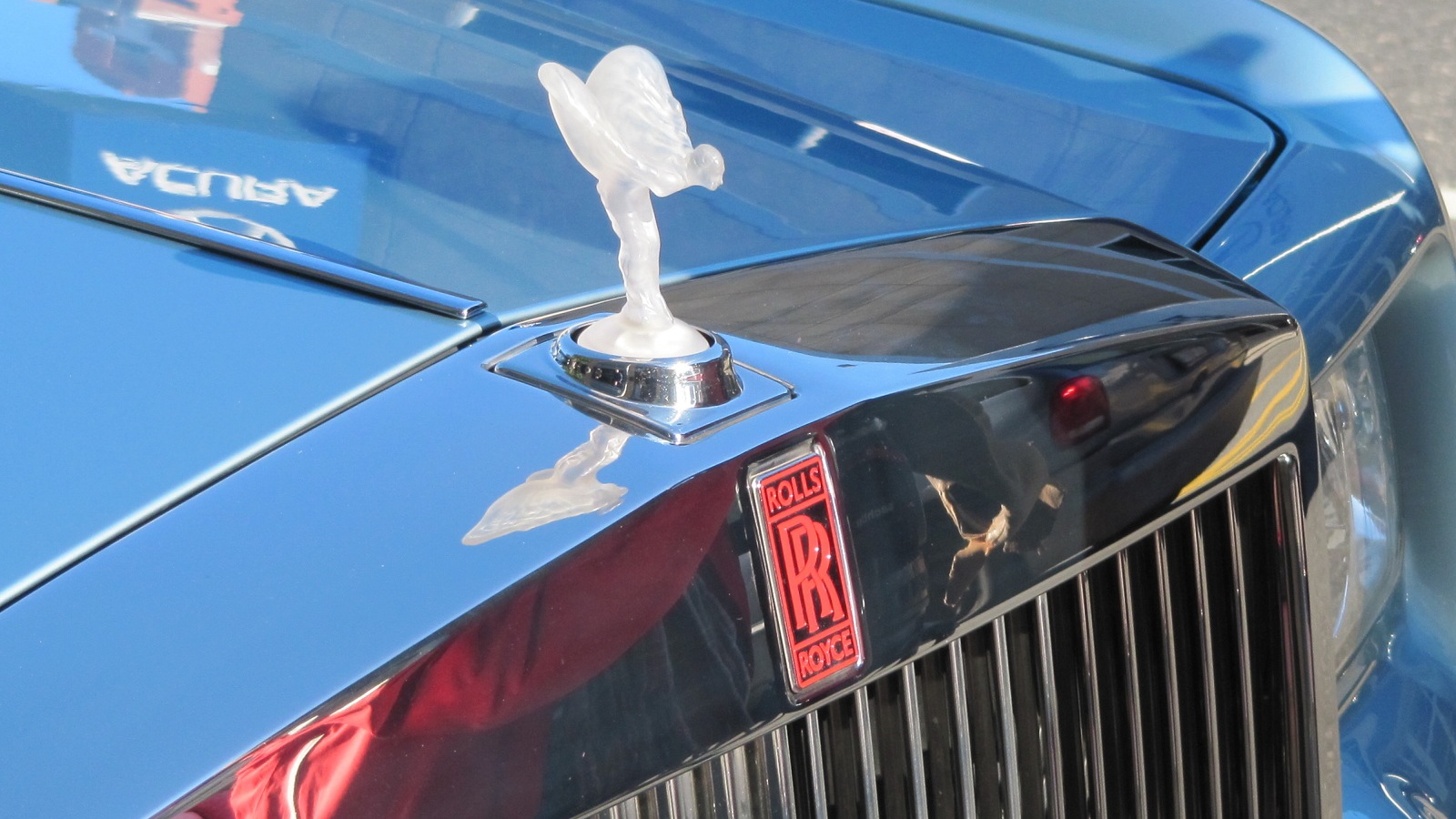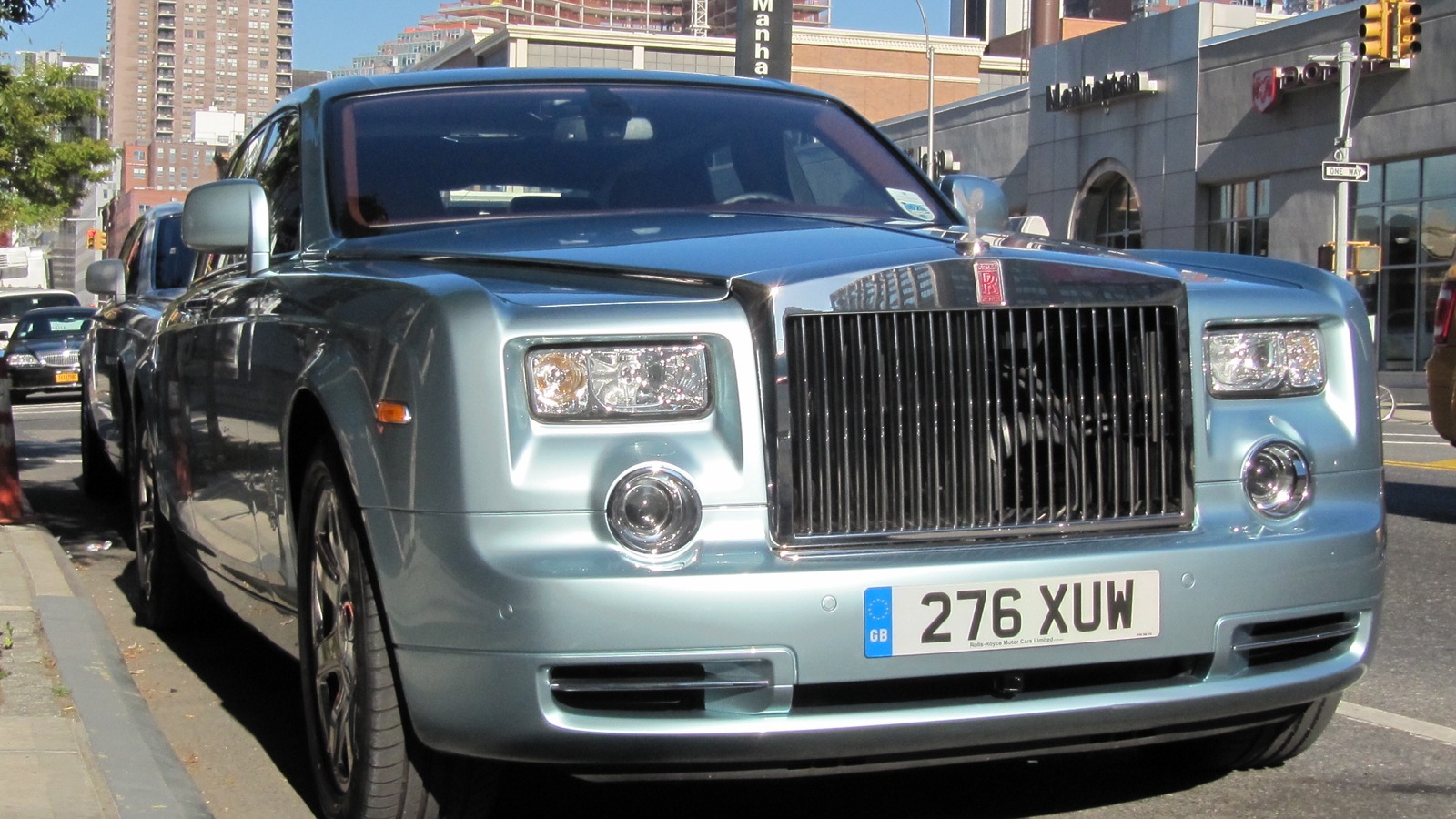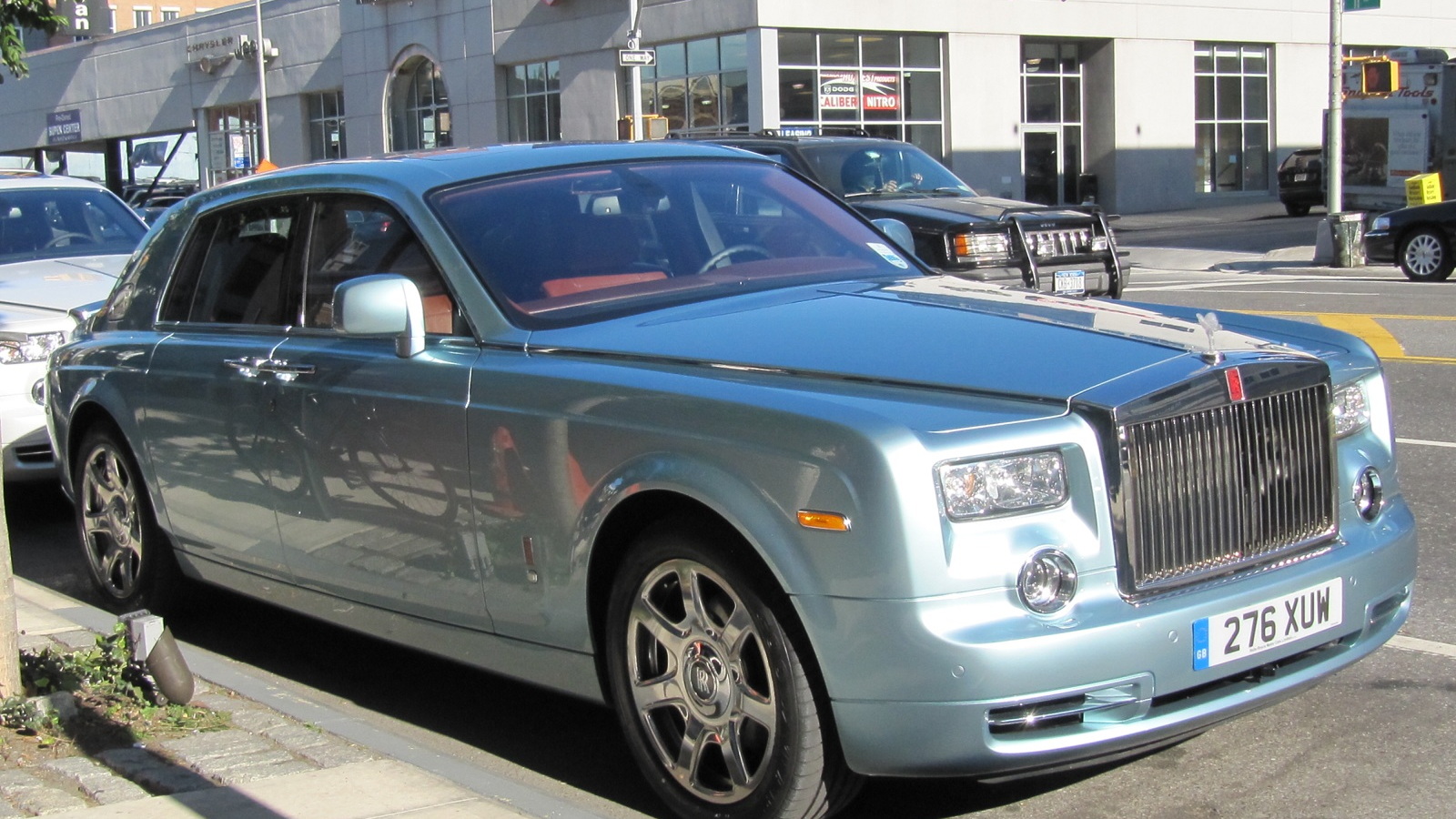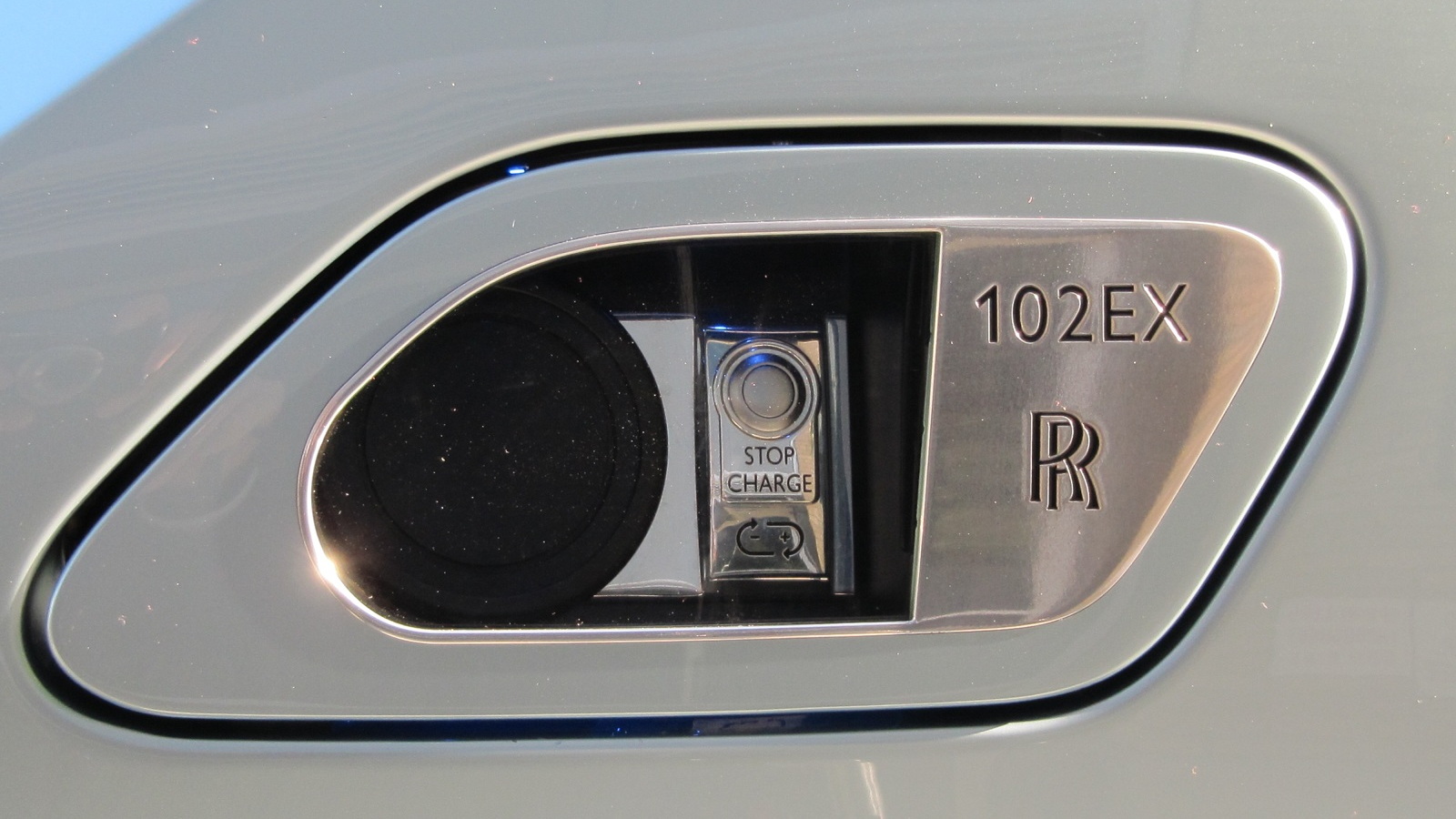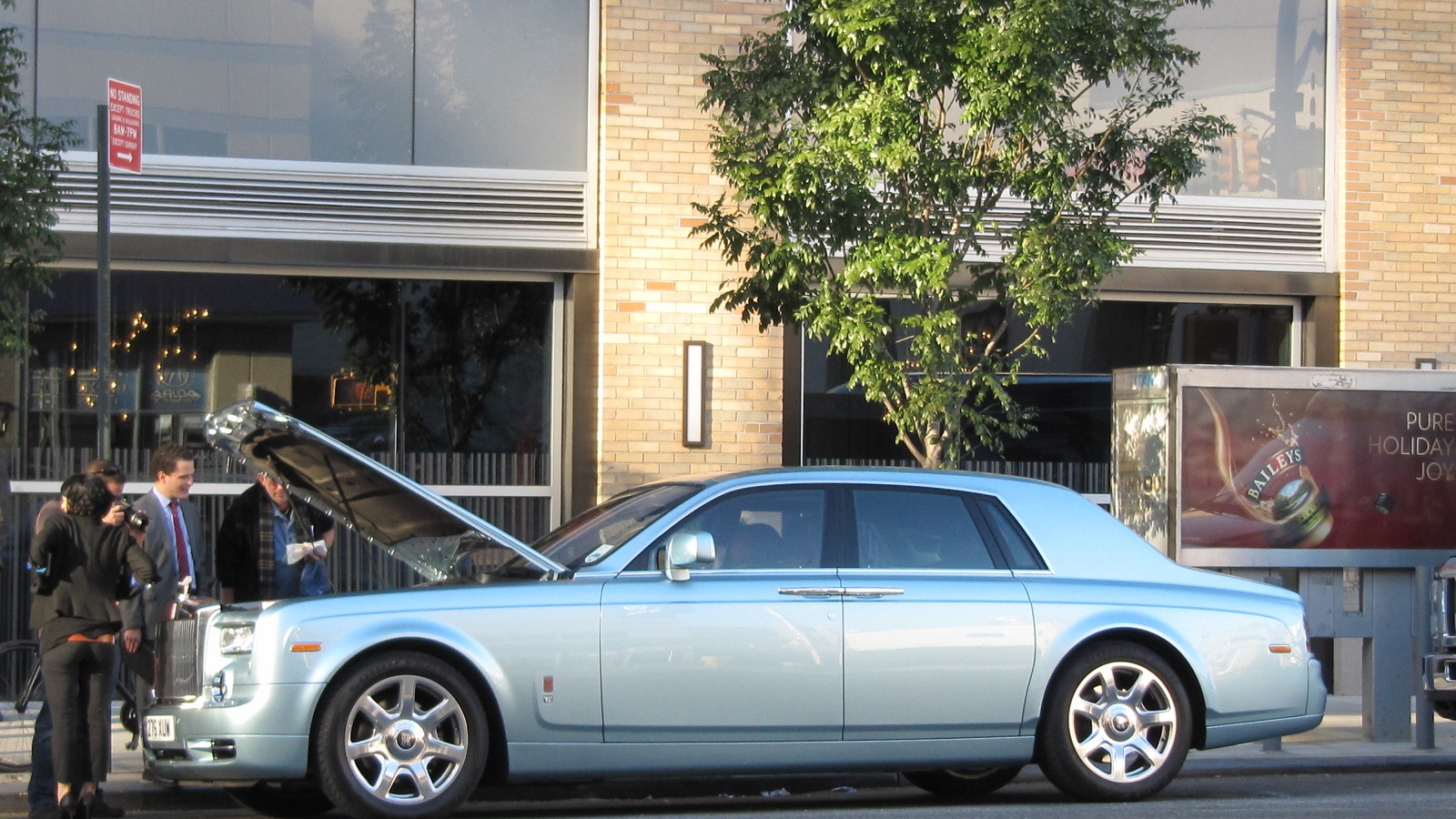If you're going to have your very first drive behind the wheel of a Rolls-Royce, what better car than a one-of-a-kind experimental all-electric Phantom?
The metallic silver-blue Phantom, given a rare factory experimental designation of 102EX, has been touring the globe to gauge the reactions of roughly 500 Rolls-Royce owners and potential customers to an entirely battery-driven vehicle from the most luxurious marque in the world.
We drove it for about 20 minutes in Manhattan this week, blending speeds up to 65 mph on the West Side Highway with the sweeping curves and frequent stops of Riverside Drive.
Handful of hints
Outside, there are only a handful of hints to its special status: the red lettering in the grille badge, the crystal "flying lady" ornament, and a see-through door for the charging port, located in the right rear roof pillar where the petrol filler is usually found.
Inside, it's almost entirely Phantom, with a couple of small changes to the instrumentation.
So what's it like to drive?
Remarkably like any other Phantom, we imagine--largely silent, with adequate acceleration to move a very large amount of car--with a handful of differences.
No idle creep
First--and most noticeably--its engineers did not program in "idle creep," as found in any automatic-transmission car. That means the driver has to accelerate vigorously while modulating the brake with the left foot.
Nor was there any hill-hold function. And we found that on uphill slopes, the 3-ton-plus weight of 102EX very much wanted to roll backwards.
Only flooring the accelerator seemed to get it going again. Once underway, accelerator behavior was fairly normal.
Regenerative braking felt mild under standard circumstances, not notably different from an automatic-transmission car.
The "low" setting (requested through a lovely chrome button on the steering wheel) made the regeneration more aggressive, but probably not enough for true one-pedal electric driving. At least, not in Manhattan traffic.

Rolls Royce Phantom Experimental Electric 102EX live photos
(Though we did find that other drivers tend to give the Phantom more room. Even pedestrians paused and waved us by--which never happens in New York. Golly.)
Gathering momentum
Second, according to the engineers, 102EX has somewhat slower acceleration than a conventional 2012 Rolls-Royce Phantom.
The car certainly kept up with traffic, but it didn't particularly have the instant-torque-from-stop sensation delivered by most electric cars. Rather, it gathers momentum--as, our minders said, the standard Phantom does too, starting out in second gear.
It definitely wasn't the "grab you by the small of your back and throw you toward the horizon" boost of a Tesla Roadster. Nor was it the slightly appliance-like sensation of a Nissan Leaf.

Rolls-Royce 102EX Electric Phantom
Instead, it was quite...errrrr...Rolls-Royce-like. The car simply proceeded. Given that it weighed 3 tons, that's a fairly impressive accomplishment all by itself.
A few odd noises
Third, given the general interior hush, we noticed a distinctly electromechanical noise coming from ahead of the driver's legs as the car slowed to a stop.
It was, according to Rolls-Royce electrical and electronics analysis specialist Rupert Kirkham, a pre-charge pump for the hydraulic braking system.

Rolls Royce Phantom Experimental Electric 102EX
He explained that to fit the battery pack into the engine compartment, many of the ancillary components and systems had to be moved around into the remaining space.
No noise masking
"Without the usual level of isolation from the engine," he said, "there's no noise masking" and components like that pump that moved closer to the driver became audible. (Another was the surprisingly noisy electric parking brake.)
Compared to a standard Phantom, Kirkham said, passengers are far more aware of tire noise--again due to the lack of masking sound provided by the mechanical bits that were removed.
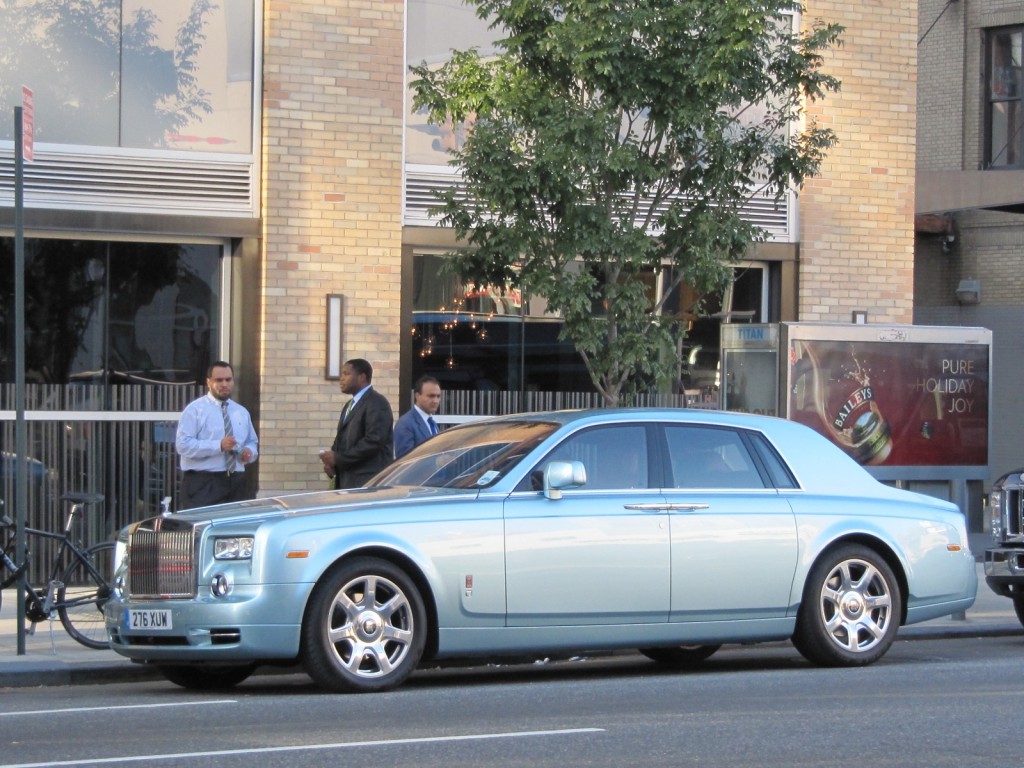
Rolls-Royce Phantom 102EX, experimental electric prototype, New York City, November 2011
The general level of fit and finish in 102EX was (of course) superb, but everyone from Rolls-Royce stressed that it's an "experimental" prototype.
It had to be developed enough so that customers didn't feel like they were driving an engineering mule, but its creators didn't have time to resolve a few of the finer points.
Customers understood that, they said, and we're certainly inclined to forgive them for it.
Reactions from Rolls-Royce owners, said Oleg Satanovsky of the company's product communications group, have been largely positive.
135 miles of range
Many originally thought the entire concept was a joke, not imagining that an electric vehicle could provide anything remotely near Rolls-Royce levels of quality and refinement, let alone acceleration and performance.
Once they rode in the car, he said, they were largely convinced--and a number professed to be awed that such a thing was possible at all. A number were "stunned," Kirkham said, taking (quiet, discreet, appropriate) pride that "their preconceptions were impressively demolished."

Rolls Royce Phantom Experimental Electric 102EX
The biggest drawback owners saw, not surprisingly, was range. Rolls-Royce quotes a range of up to 200 kilometers (135 miles), though Kirkham noted that the total range had fallen to a mere 88 miles after a cold soak in the brisk autumn nights of New York City suburbs.
Several didn't like the transparent charging-port door, Kirkham said, preferring a vehicle that would look more conventional on the outside.
Largest battery pack?
102EX has an air-cooled battery pack of 71 kilowatt-hours, which Rolls-Royce felt was the largest yet in any passenger car. (The 2012 Tesla Model S will actually have 85 kilowatt-hours, but we'll forgive the firm for that too.)

Rolls Royce Phantom Experimental Electric 102EX live photos
The cells are from the Scottish firm Adreon, and the entire pack weighs more than 1,400 pounds. It's located in the engine compartment, with a pair of liquid-cooled electric motors that power the rear axle installed behind the rear compartment.
The entire car weighs about 200 kg (350 pounds) more than a standard Phantom--which itself tips the scales at a substantial 5,800 pounds--and the weight distribution is considerably altered by the new componentry.
One advantage to the new powertrain: With only cooling pipes to pass from one end of the car to the other, the driveshaft tunnel could be removed, giving the rear compartment a completely flat floor.

Rolls Royce Phantom Experimental Electric 102EX
Being a European-spec car--albeit with left-hand drive--the recharging port uses a Blue Mennekes connector. For U.S. recharging, the company has a J-1772 adaptor (stuck in a bag being held by U.S. Customs the day we drove the car).
Whirlwind world tour
Despite its low 4,000 miles or so, it's been on a whirlwind world tour. It debuted in March at the Geneva Motor Show, and visited Singapore and Beijing; did a European swing that included London, Paris, and Madrid; then Tokyo and Yokohama in Japan, followed by Dubai and Abu Dhabi.
Its visit to New York this week will be followed by a stay in Los Angeles, and then it'll return home to England in early December.
There, it'll be torn down to inspect the condition of its unique electric parts, and then likely housed among the company's collection of rare and unusual Rolls-Royces.
Clean-sheet future
The overall goal of the project, said Satanovsky, was simply to think about what a future Rolls-Royce could be.
"We wanted to do something that was the opposite of a gasoline-powered Phantom," he said. A hybrid would have been a "compromise," and an electric car seemed within the realm of possibility a decade or more hence.
So now the company will finish gathering data from its owners, assess the performance of the car so far, and then sit down for a nice long think.
Stay tuned. This could be interesting.
+++++++++++
